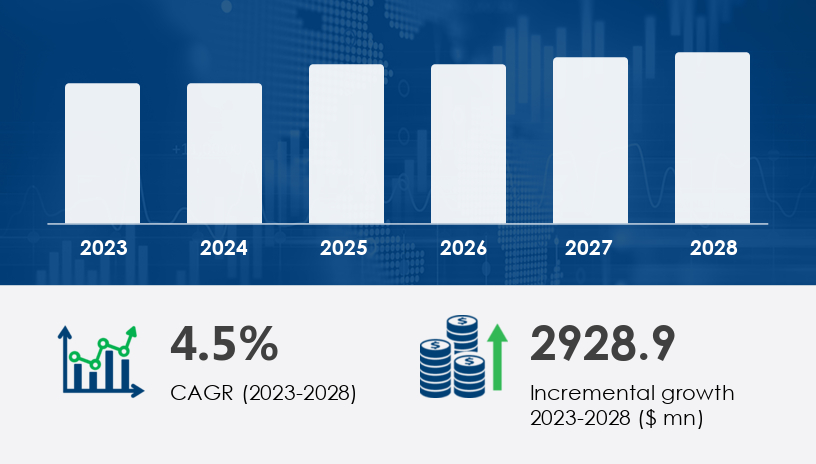Benign Prostatic Hyperplasia (BPH) Devices Market 2024-2028
The Benign Prostatic Hyperplasia (BPH) Devices Market is set to grow by USD 2.93 billion from 2024 to 2028, with a CAGR of 4.5%. The increasing prevalence of BPH due to aging populations and associated risk factors is a key driver. The preference for minimally invasive, in-office surgical techniques is expanding the market. However, the high cost of BPH treatment remains a challenge, affecting accessibility. Advances in medical technology and the development of cost-effective treatments are expected to sustain market growth.

For more details about the industry, get the PDF sample report for free
Market Segmentation
By Therapy
- TURP (Transurethral Resection of the Prostate)
- Laser Therapy
- Others
By Geography
- North America
- Europe
- Asia
- Rest of the World (ROW)
Market Dynamics
Drivers
-
Increasing Prevalence of BPH and Risk Factors
- Affects 10% of men in their 30s, 20% in their 40s, and up to 90% in their 70s and 80s.
- Aging populations are driving demand for BPH treatment devices.
- Laser treatments such as Elesta Echo-Laser and Urology lasers are gaining traction.
- Minimally invasive surgeries like robot-assisted surgery, transurethral needle ablation, and prostate artery embolization are becoming more popular.
- Other advanced options include Aquablation, the iTind device, and prostatic stenting.
-
Rising Preference for In-Office, Minimally Invasive Surgical Techniques
- Traditional TURP treatments involve longer recovery times and hospital stays.
- Minimally invasive alternatives such as laser ablation (Aquablation, Elesta Echo-Laser Treatment), transurethral needle ablation (TUNA), and prostatic urethral lift are gaining acceptance.
- Many of these procedures can be performed in a physician's office, reducing hospitalization needs.
Market Trends
-
Shift Toward In-Office, Minimally Invasive Procedures
- Rising demand for outpatient BPH treatments like Aquablation, transurethral needle ablation (TUNA), and prostatic urethral lift due to faster recovery and reduced hospital stays.
-
Advancements in Laser and Robotic Technologies
- Laser treatments (Elesta Echo-Laser, Urology lasers) and robot-assisted surgeries are improving precision and effectiveness.
-
Focus on Cost-Effective Treatments
- High treatment costs drive demand for affordable alternatives, supported by reimbursement policies.
Challenges
High Cost of BPH Treatment
- BPH treatments, especially minimally invasive procedures, remain expensive.
- Costs vary based on procedure type, surgeon fees, anesthesia, and hospital charges.
- Reimbursement policies and healthcare expenditures play a major role in accessibility.
- Despite technological advancements, concerns over kidney damage and urinary tract infections continue to impact adoption.
Get more details by ordering the complete report
Key Players
The BPH devices market is highly competitive, with companies investing in partnerships, mergers, and product launches to strengthen their position.
Leading Companies
- Astellas Pharma Inc.
- biolitec AG
- Boston Scientific Corp.
- Butterfly Medical
- Coloplast AS
- Convergent Laser Technologies
- IPG Photonics Corp.
- KARL STORZ SE and Co. KG
- Medeon Biodesign Inc.
- Medifocus Inc.
- Olympus Europa SE and Co. KG
- OmniGuide Holdings Inc.
- ProArc Medical
- Richard Wolf GmbH
- SRS Medical
- Teleflex Inc.
- Urologix LLC
- Vendor Credentialing Service LLC
- Zenflow Inc.